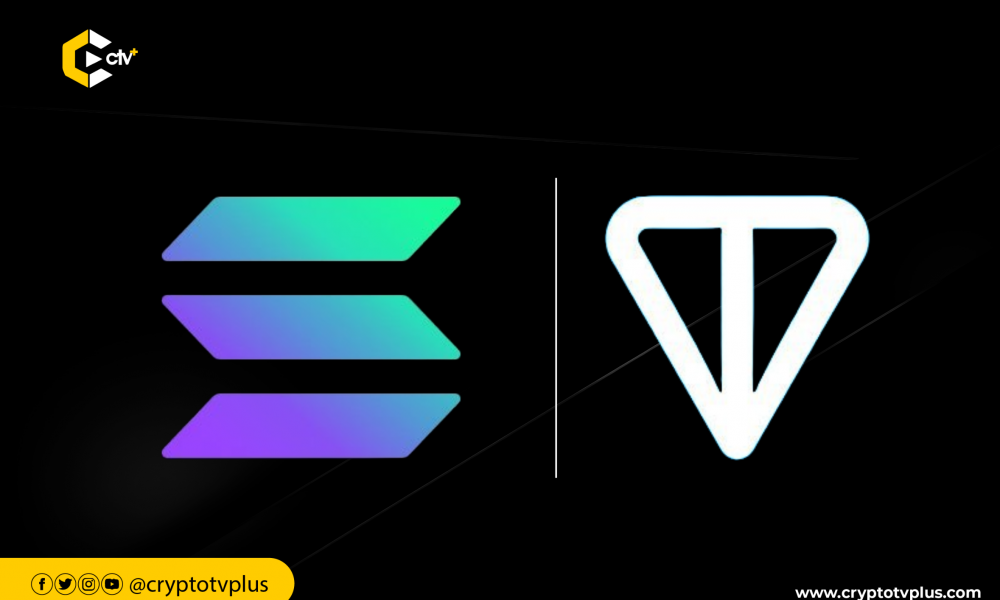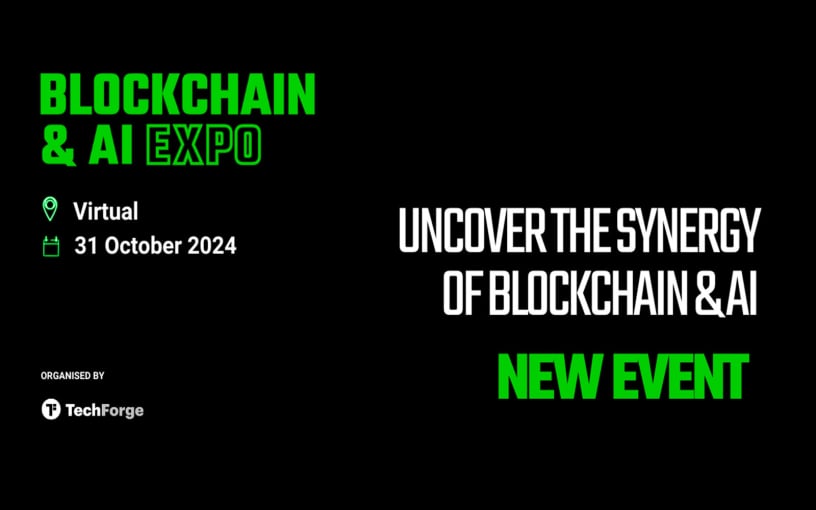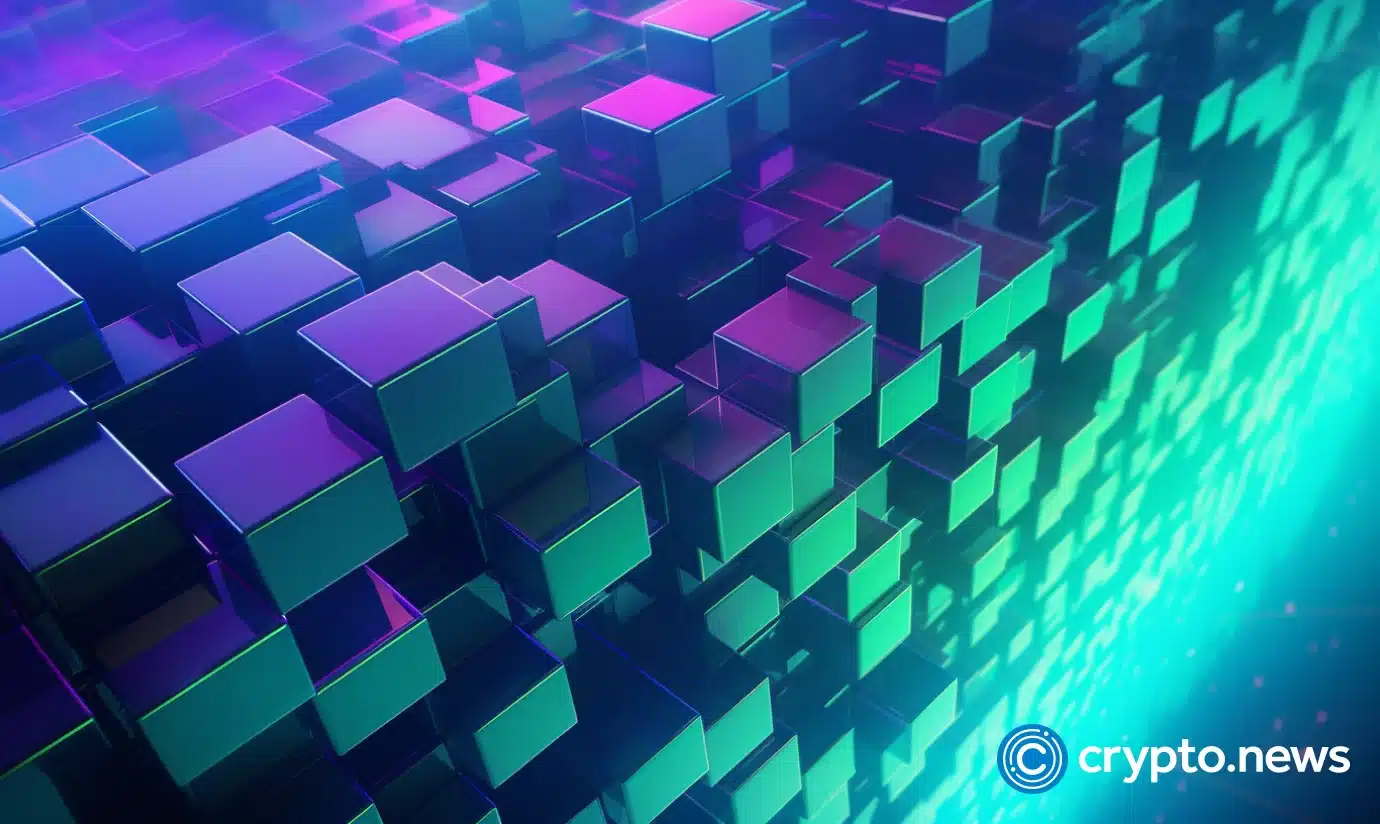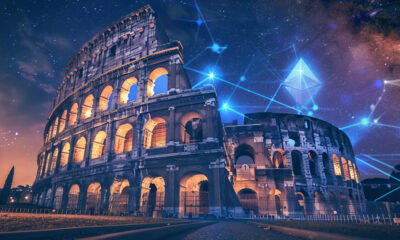News
Solana versus TON blockchain: what you should know | CryptoTvplus

By 2024, Solana and TON (The Open Network) have skyrocketed to prominence in the blockchain world, hitting record-high market caps since their mainnet debuts. Solana has notably become a breeding ground for top-tier memecoins starting late 2023.
Conversely, TON has been the go-to platform for popular crypto “tapping” projects, famed for their swift user adoption rates. For example, the Notcoin project amassed over a million users in under a month, while Hamster Kombat achieved a historic milestone with the fastest-growing YouTube channel to date, surpassing 20 million subscribers in a mere month.
This article delves into these two blockchains’ unique traits and features, providing a comparative analysis.
Transaction per second (TPS)
Transaction Per Second is the number of transactions a blockchain can handle per second. While several speculations indicate Solana processes up to 65,000 transactions per second, data from its explorer reveals that it is a little over 3,000 TPS and has processed almost 300 billion transactions.
Part of this can be attributed to its longevity since the blockchain was launched in 2017 and has undergone several adjustments.
TON blockchain on the other hand has a TPS that averages 100 and a total transaction that exceeds 600 million. A huge part of these transactions occurred between March 1 and June, corresponding to deploying several games on the blockchain with Notcoin leading the way.
While Solana’s block time is 0.4 seconds, TON’s block time is 5 seconds. Block time is the duration it takes to validate a transaction.
Consensus Algorithm
A consensus algorithm is a process used to achieve agreement on a single data value among distributed processes or systems. It is a crucial component in decentralized computer networks which ensures that all nodes in the network agree on the state of the system, even in the presence of failures or outages.
Solana’s consensus algorithm is a hybrid proof-of-stake (PoS) and proof-of-history (PoH) mechanism that combines the efficiency of PoH with the security of PoS. This consensus algorithm is designed to achieve high scalability and speed while maintaining decentralization and security.
Proof of History (PoH) is a consensus mechanism used in blockchain networks to establish a verifiable passage of time without relying on a centralized time source.
In the PoS consensus mechanism, validators are chosen based on their stake in the network, to validate transactions, and run the network. In return, they are rewarded with in the form of SOL tokens.
On Solana, the leader generates a PoH sequence, which is a chronological order of events or transactions initiated on Solana. Validators then verify the PoH sequence, create checkpoints, and reach consensus on the order of transactions based on the PoH sequence. The leader creates a block based on the consensus, which validators then verify and add to the blockchain.
Additionally, Solana uses SHA-256, a 256-bit secure hash algorithm, in its Proof of History (PoH) mechanism. This is used to create a rhythmic clock that measures the creation of blocks with the exact time when they were made. The SHA-256 hash algorithm is used to encode the passage of time.
TON uses a variant of the Proof-of-Stake (PoS) consensus mechanism called Byzantine Fault Tolerant Proof-of-Stake (BFT-PoS). This allows the network to achieve high transaction speeds and finality while maintaining security and decentralization.
On TON, validators are selected to participate in the consensus process based on the amount of cryptocurrency they have staked (i.e., locked up) on the network. The consensus process is divided into rounds, with each round having a leader selected to propose the next block.
The leader broadcasts the proposed block to all other validators, who then validate the block and vote on its validity. If at least two-thirds of the validators vote to accept the block, it is finalized and added to the blockchain.
If the leader fails to propose a valid block or less than two-thirds of validators vote to accept it, a new leader is selected, and the process repeats. BFT-PoS is designed to tolerate Byzantine faults, where some validators may behave maliciously or fail unexpectedly. This ensures that the network can continue operating even if up to one-third of the validators are faulty or adversarial.
The TON (The Open Network) blockchain utilizes the KECCAK-256 hash function, which is a variant of the SHA-3 hash algorithm. This choice of hash function is a significant design decision for the TON platform, as the hash function plays a crucial role in various security-critical operations within the blockchain.
The choice of KECCAK-256 provides a level, not complete, of compatibility with the Ethereum ecosystem, as Ethereum also uses a KECCAK-based hash function (KECCAK-256) for many of its core operations. This compatibility can be beneficial for developers and users who are familiar with the Ethereum ecosystem and may want to interact with or build applications on the TON platform.
Programming language
The primary programming languages used for developing on the Solana blockchain are Rust and C/C++. Rust is the native and most widely used programming language for developing on-chain programs, including smart contracts.
Solana was built using Rust, and the Solana team has created a robust set of libraries and tools specifically for building blockchain applications in Rust.
However, Solana also supports using Python for client-side development, though not for on-chain program development. Developers can use Python SDKs and APIs to interact with the Solana blockchain from their client applications.
Solana also has community-contributed SDKs that allow developers to use other programming languages, such as Java, Go, and JavaScript/TypeScript, for client-side development and interaction with the Solana blockchain.
FunC is the primary smart contract programming language for TON. Fift is another language that was designed specifically for TON Blockchain. Tact is a high-level language for TON smart contracts similar to TypeScript and Rust. It is developed by the community.
Sharding
Solana does not support sharding, which is a technique used to improve the scalability of blockchain networks by dividing the network into smaller, more manageable pieces called shards.
In 2019, Solana CEO Anatoly Yakovenko shared that sharding can introduce new security risks, such as the potential for a single shard to be taken over by hackers, which could trigger a domino effect and impact the overall security of the network.
However, Firedancer, an independent validator client for Solana, is designing its infrastructure to introduce sharding support on Solana. The goal is to allow the network to be divided into smaller, more manageable pieces for improved efficiency. Firedance is not yet integrated with Solana mainnet.
The TON blockchain has a feature called “dynamic sharding”. Unlike static sharding, where the number of shards is predetermined, TON’s dynamic sharding feature allows the network to automatically create new shard-chains as the load on the network increases.
This means that the TON blockchain can scale horizontally, adding more shardchains to handle the growing demand, without the need for manual intervention or network upgrades.
The TON network continuously monitors the load on the existing shard-chains and automatically creates new shard-chains when the load reaches a certain threshold. This ensures that the network can always maintain high performance and low latency, even as the number of users and transactions grows.
Tokens metrics and average transaction fee
The SOL is the native cryptocurrency of the Solana blockchain platform. It secures the blockchain through staking, where validators are chosen based on their stake in the network. SOL is also used to pay transaction fees, which range from $0.003 to $0.030 per transaction.
SOL’s market capitalization currently exceeds $60 billion, marking an increase of over 16,500% since its launch. Its peak market cap was $90.1 billion on April 1, 2024, according to Coingecko.
The all-time high (ATH) price of SOL is $259.96, while the all-time low (ATL) is $0.50. The circulating supply is 461,904,034 SOL, and the total supply is 578,470,067 SOL.
A key factor contributing to SOL’s high market cap, placing it among the top ten crypto projects over the past four years, is the substantial amount of Solana staked. According to Solscan, this amount is $374 million.
The $TON token is the native cryptocurrency of the TON blockchain platform, used for staking, voting, and transaction fees. Each transaction on the TON network costs approximately $0.0055 in TON tokens, incentivizing validators to maintain network integrity.
The total supply of $TON is 1 billion tokens, with around 500 million currently circulating. It is traded on major exchanges like Binance, Huobi, and Kraken.
The market cap has seen a 1,565% increase, reaching over $16.8 billion, with a peak of $23.3 billion on April 13, 2024. The all-time high (ATH) and all-time low (ATL) for $TON are $8.24 and $0.3906, respectively.
Token types
The Solana Program Library (SPL) defines the token standard for both fungible and non-fungible tokens on the Solana blockchain. This SPL token standard ensures that these tokens are interoperable with Solana wallets and smart contracts.
Unlike Ethereum, which has separate standards like ERC-20 and ERC-721 for different token types, the SPL token standard covers all token types on Solana. The differences in token functionality are specified at the token creation stage.
Furthermore, Solana is developing “Token-2022,” which will introduce new features to SPL tokens, such as interest-bearing logic, transfer fees, and other account-specific functions. These enhancements will expand the capabilities of the SPL token standard and foster the growth of Solana’s dynamic on-chain ecosystem.
On the TON blockchain, Jettons serve as the fungible token standard, designed to facilitate the creation and exchange of tokens within the TON ecosystem. Examples of tokens built with the Jettons standard include TONALD, named after former U.S. President Donald Trump; BOOBA, a meme-inspired token; and Burncoin.
Jettons allow users and developers to mint custom tokens that can represent a variety of assets or values. This provides a flexible tool for decentralized finance (DeFi), gaming, and other applications.
TON has also introduced TEP-64 (TON Enhancement Proposal 64), a token data standard that defines the interface for token metadata within the TON ecosystem. Authored by EmelyanenkoK and Tolya, this proposal aims to standardize the representation of token data, including Non-Fungible Tokens (NFTs) and Jettons, to enhance interoperability and user interaction across different platforms.
TEP-64 offers a flexible framework for token metadata, accommodating both on-chain and off-chain storage methods. This standard facilitates the automatic retrieval and uniform display of token information, such as names, descriptions, and images, by applications like wallets and marketplaces.
Growth dynamics
Solana was launched in March 2020, initially trading below $1. In its early years, Solana’s price remained low as the project was still establishing itself. However, in 2021, Solana began to gain significant traction and growth. By February 2021, Solana had climbed the market capitalization rankings from position 42 to rank 7 by September 2021.
This rapid rise was driven by Solana’s key technical advantages, including its high throughput of up to 65,000 transactions per second, low transaction fees, and fast confirmation times.
Solana’s growth has been fueled by its support for a wide range of decentralized applications, particularly in areas like DeFi, NFTs, gaming, and the rush for meme tokens.
On the other hand, the growth of TON can be attributed to two major factors. First, its integration with the Telegram application, which has over 900 million users today. Second, TON’s support for Mini Apps, which are lightweight applications that can be embedded directly into Telegram chats, offers an innovative way to drive user engagement and ecosystem growth.
Mini Apps enable developers to create interactive experiences within the Telegram interface, leveraging the platform’s social features and user base.
Examples of these Mini Apps include Notcoin, Tapswap, Hamster Kombat, Blum, Pixel Tap, Yescoin, and various bots created to facilitate the trading of DeFi tokens on both TON and Solana.
News
Blockchain Technology Will Transform Water Access and Management Globally

Disclosure: The views and opinions expressed here are solely those of the author and do not represent the views and opinions of the crypto.news editorial team.
Access to clean water is a basic human need, yet billions of people around the world still struggle to get it. According to the World Health Organization, over 2 billion people live in countries suffering from severe water stress, and this number is expected to continue to grow due to climate change and population growth.
Traditional water management systems have struggled to address these challenges, often hampered by inefficiencies, lack of transparency, and misallocation of resources. Blockchain technology offers a promising solution to these challenges, providing equitable access and sustainable use of this crucial resource.
The current state of water management
Water management today faces several pressing issues. Inefficiencies in water supply, distribution, and use, coupled with a lack of real-time monitoring, often result in resource waste and misallocation. Many water sources fail to realize their full potential due to infrastructure and financing shortfalls. For example, the Environmental Protection Agency (EPA) report indicated that the United States would need to invest $625 billion over the next 20 years to repair, maintain and improve the country’s drinking water infrastructure due to aging pipes and other infrastructure problems. Additionally, in the United States alone, household leaks can to waste nearly 900 billion gallons of water per year nationwide. This is equivalent to the annual domestic water consumption of nearly 11 million homes.
Furthermore, corruption and mismanagement of water resources can cause unequal distribution, with disadvantaged communities often bearing the brunt of water scarcity. For example, South Africa is struggling with myriad challenges to its water security: drought, inadequate water conservation measures, outdated infrastructure, and unequal access to water resources. The country faces significant water scarcity, with demand expected to outstrip supply by 2030, creating a projected gap of 17%.
Furthermore, the global water industry is highly monopolized, with a few key players controlling a significant share of the market. These companies exert substantial influence over the water supply chain, often prioritizing profit over equitable distribution and environmental responsibility. This concentration of power can lead to inflated prices and limited access for vulnerable populations. The global bottled water market alone is projected to reach $509.18 billion by 2030, with these large companies capturing a significant share of revenue. This monopolization exacerbates existing inequalities in water access and highlights the need for more decentralized and community-driven water management solutions.
Source: Grand View Search
The potential of blockchain in water management
Blockchain technology can address these issues by providing a transparent, secure, and decentralized platform for water resource management. This approach offers several advantages:
- Transparency and accountability. Blockchain’s immutable ledger ensures that all transactions and data entries are transparent and cannot be changed once recorded. This transparency can reduce corruption and ensure that water resources are allocated fairly and efficiently. For example, blockchain can be used to track water usage from source to end user, providing a clear record of how water is distributed and used. This level of transparency can help hold authorities accountable and manage water resources sustainably.
- Efficient resource management. Blockchain can facilitate the creation of smart contracts, which are self-executing contracts with the terms of the agreement written directly into the code. These contracts can automate water distribution based on real-time data, directing water to where it is needed most. For example, smart contracts could be used to manage urban water supply systems, automatically adjusting water distribution based on real-time consumption patterns and demand. This can help optimize water use, reduce waste, and ensure that households and businesses receive the right amount of water at the right time.
In Dubai, the Dubai Electricity and Water Authority (DEWA) has implemented a blockchain-based smart water network initiative as part of its broader smart city strategy. This project integrates blockchain technology with IoT sensors to monitor water usage in real time, manage distribution, and detect leaks. The decentralized ledger ensures data integrity and transparency, enabling more efficient water management and reduced waste. DEWA’s initiative aims to improve sustainability and resource management in the rapidly growing city, highlighting the potential of blockchain to support urban water management and conservation efforts.
Community participation and ownership
Through blockchain, individuals can directly control and monetize their access to water resources, eliminating the need for third-party intermediaries. This direct control model allows local communities to make collective and transparent decisions about their water use. By managing their water directly from the source, communities can tailor water management practices to their specific needs, promoting equitable distribution and encouraging a sense of accountability and stewardship.
Additionally, future models could allow people to monetize their access to water through web3 technologies. For example, a community-to-business (C2B) model could allow people to sell water directly to companies. In this model, people do not have to own the water directly, but can profit by staking their tokens during event sales pools. This approach not only supports sustainable water management, but also creates economic opportunities for community members. Additionally, a “Burn to Secure” protocol can be used to provide water allocation rights. This protocol provides a true sense of water security and financial opportunity by allowing people to redeem their rights. This system not only secures future water allocations, but also increases token scarcity and value.
Additionally, a pure sense of investment is achieved through investments in water sources. This leads to potential financial returns and dividends by addressing the inefficiencies in water supply mentioned above. By investing to finance infrastructure projects, such as building factories and improving distribution systems, more water can be brought to communities, creating additional economic opportunities.
Monetizing water access through the C2B model, the “Burn to Secure” protocol, and investments in water sources all generate economic benefits for the community, promoting a more equitable and efficient water management system.
Overcoming challenges
While blockchain technology has the potential to improve water management, there are challenges to its adoption. The complexity of blockchain systems and the need for technological infrastructure can be barriers, especially in developing regions. Additionally, there are concerns about the significant energy consumption of blockchain networks. However, technological advances and the development of more energy-efficient blockchain solutions are helping to alleviate these concerns. Additionally, education and capacity building are key to ensuring stakeholders understand how to effectively use blockchain technology. Governments, NGOs, and private sector partners need to work together to provide training and support to communities and water management authorities.
Blockchain technology offers a practical and effective means to improve water management. In addition to addressing inefficiencies, blockchain empowers communities, promotes sustainable practices, and opens up new economic opportunities through models like community-to-business (C2B). As we face the growing challenges of climate change and population growth, blockchain is not only an innovative solution, but represents a fundamental shift in the way we manage and value water resources. Adopting blockchain in water management is essential to creating a sustainable and equitable future by changing the way we interact with and protect our most vital resource.

Jean-Hugues Gavarini
Jean-Hugues Gavarini is the CEO and co-founder of LAKE (LAK3), a real-world asset company leveraging blockchain technology to decentralize access to the global water economy. LAKE aims to ensure access to clean water for all, protect water resources, and deliver water to those in need through innovative technologies. Jean-Hugues has a diverse career spanning the luxury, fashion, and footwear industries. His career path includes notable successes at Mellow Yellow, Cremieux, and Tod’s. Raised between Silicon Valley and the French Alps, Jean-Hugues has always been immersed in technology and freshwater resources. In 2018, Jean became the CEO of Lanikea Waters, a water solutions entity based in the French Alps. In 2019, the concept of LAKE was born, embodying his commitment to innovation and sustainability.
News
Blockchain and AI Expo 2024

With rapid advances in the world of AI and blockchain, there are opportunities to leverage the security and transparency features of blockchain to improve the reliability and trust of AI systems and data transactions.
Explore the synergy of these advanced technologies in virtual mode Blockchain and AI Expowhich takes place on October 31, 2024 TO 10:00 GMT.
The event features cutting-edge presentations led by leading experts in evolving fields. Presentations are set to explore opportunities and challenges in the fusion of blockchain and AI, real-world applications, ethics, innovations in environmental sustainability, and more!
Gain a comprehensive understanding of how these technologies can synergistically drive innovation, optimize operations, and promote strategic growth opportunities. Develop your knowledge to facilitate informed decision making and give your company a competitive edge in the growing technology landscape.
News
Nigeria Eyes National Blockchain Nigerium for Data Sovereignty

Nigeria is keeping an eye on a new native blockchain network to protect the country’s data sovereignty.
According to local media, a team from the University of Hertfordshire has proposed the new blockchain, Nigeriato the National Information Technology Development Agency (NITDA).
Chanu Kuppuswamy, who leads the team, argued that relying on blockchain networks whose developers are located in other regions poses national security risks to the Nigerian government. He further said that Nigerium would allow the West African nation to customize the network to meet specific needs, while also promoting data sovereignty.
In his presentation, Chanu cited the recent migration of Ethereum to test of participation (PoS) consensus as an instance in which no Nigerians were involved but whose impact is far-reaching.
“Developing an indigenous blockchain like Nigerium is a significant step towards achieving data sovereignty and promoting trust in digital transactions in Nigeria,” he said.
While receiving the proposals in Abuja, NITDA’s Kashifu Abdullahi acknowledged the benefits a local blockchain would bring to Nigeria, including increased security of citizens’ data.
However, a NITDA spokesperson later clarified that Nigerium is still at the proposal stage and that the government has not yet decided whether to proceed or not.
“The committee is still discussing the possibility with stakeholders. Even if a decision is finally made, there is no guarantee that the name will be Nigerium,” the spokesperson told the media.
Nigerium’s reception in the country has been mixed. Some, like financial analyst Olumide Adesina, To say the network is “dead on arrival”. He believes the Nigerian government’s poor record in following through on its big technology plans will claim another victim. He pointed to the eNaira as a missed opportunity whose chances of success were much higher than those of Nigerium.
Others welcomed the proposal. Chimezie Chuta, who chairs the renewed The Nigerian Blockchain Policy Committee is “extremely optimistic“that Nigerium will be more successful than eNaira.
Speaking to a local news agency, Chuta stressed that eNaira failed because the central bank initiated the project on its own, without involving any stakeholders.
“They just cooked it and expected everyone to like it. [With Nigerium]there will be a lot of collaboration,” he said.
Registration of property title, digital identity and Certificate Verification are among the use cases that Nigerium is expected to initially target. However, Nigeria has already made progress in some of these fields through public blockchains.
SPPG, a leading school in governance and politics, announced in May the country’s first blockchain certificate verification system. Built on the The BSV BlockchainIt was developed in collaboration with the blockchain data recording company VX Technologies and local lender Sterling Bank.
Watch: The Future Has Already Arrived in Nigeria
 Italian: https://www.youtube.com/watch?v=M40GXUUauLU width=”560″ height=”315″ frameborder=”0″ allowfullscreen=”allowfullscreen”>
Italian: https://www.youtube.com/watch?v=M40GXUUauLU width=”560″ height=”315″ frameborder=”0″ allowfullscreen=”allowfullscreen”>
New to blockchain? Check out CoinGeek Blockchain for Beginners section, the definitive guide to learn more about blockchain technology.
News
Cambodian CBDC Developer to Build Palau Bond Market on Blockchain: Report

A Japanese fintech developer will build a blockchain-based bond market gateway for Palau, aiming to launch a trial in 2024 and a full launch the following year.
Japanese fintech developer Suramitsubest known for developing a central bank digital currency (CBDC) for Cambodia, is intended to build a Blockchain-gateway to the bond market based on the Pacific island nation of Palau, Nikkei He learned.
Soramitsu won the contract and plans to introduce the market on a trial basis in fiscal 2024, with a full launch scheduled for the following year, allowing the Palauan government to issue bonds to individual investors and efficiently manage principal and interest payments, according to the report.
The total cost of the project is estimated at several hundred million yen ($1.2 million to $5.6 million), less than half the cost of a non-blockchain alternative, people familiar with the matter said. The project has reportedly received support from Japan’s Ministry of Economy, Trade and Industry, with Japan’s foreign and finance ministries providing strategic and management advice on the project.
Soramitsu’s successful development of Cambodia’s CBDC in 2020 has boosted its reputation, with the digital currency’s popularity soaring, with over 10 million accounts opened by December 2023, representing 60% of Cambodia’s population. Following this, Cambodia’s central bank governor Chea Serey indicated intends to expand the reach of its CBDC internationally, particularly through collaboration with UnionPay International, the Chinese card payment service, and other global partners.
While Soramitsu’s work in Cambodia has been well received, the long-term popularity of CBDCs remains to be seen. As of late June, crypto.news reported a sharp drop in activity in India’s digital currency, the e-rupee, after local banks stopped artificially inflating its values.
According to people familiar with the matter, the Reserve Bank of India managed to hit the 1 million retail transaction milestone last December only after the metrics were artificially infiltrated by local banks, which offered incentives to retail users and paid a portion of the bank’s employees’ salaries using the digital currency.
-

 News1 year ago
News1 year ago“Captain Tsubasa – RIVALS” launches on Oasys Blockchain
-

 Ethereum1 year ago
Ethereum1 year agoComment deux frères auraient dérobé 25 millions de dollars lors d’un braquage d’Ethereum de 12 secondes • The Register
-

 News1 year ago
News1 year agoSolana ranks the fastest blockchain in the world, surpassing Ethereum, Polygon ⋆ ZyCrypto
-

 Videos1 year ago
Videos1 year agoHistoric steps for US cryptocurrencies! With a shocking majority vote!🚨
-

 Videos1 year ago
Videos1 year agoIs Emorya the next gem💎 of this Bitcoin bull run?
-

 News1 year ago
News1 year agoSolana Surpasses Ethereum and Polygon as the Fastest Blockchain ⋆ ZyCrypto
-

 Videos1 year ago
Videos1 year agoNexus Chain – Ethereum L2 with the GREATEST Potential?
-

 Ethereum1 year ago
Ethereum1 year agoScaling Ethereum with L2s damaged its Tokenomics. Is it possible to repair it?
-

 News1 year ago
News1 year agoFnality, HQLAᵡ aims to launch blockchain intraday repositories this year – Ledger Insights
-

 Regulation1 year ago
Regulation1 year agoFinancial Intelligence Unit imposes ₹18.82 crore fine on cryptocurrency exchange Binance for violating anti-money laundering norms
-

 Bitcoin1 year ago
Bitcoin1 year agoBitcoin Drops to $60K, Threatening to Derail Prices of Ether, Solana, XRP, Dogecoin, and Shiba Inu ⋆ ZyCrypto
-

 News1 year ago
News1 year agoSendBlocks Debuts with Major Support to Improve Blockchain Data Management


















